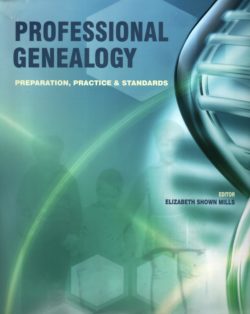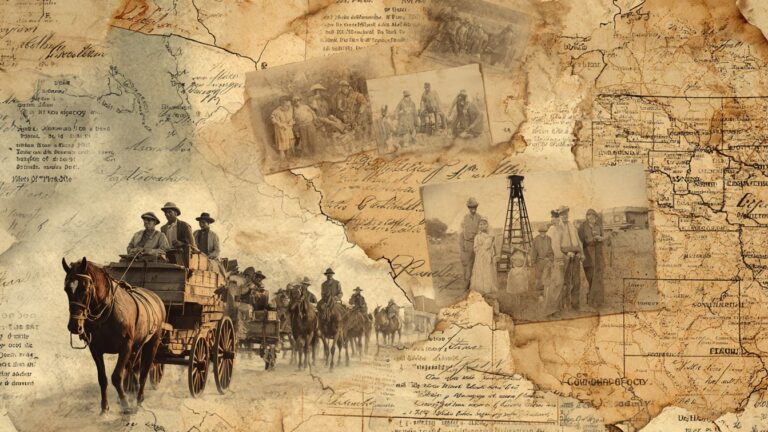
Forensic Genealogy Explained in PROGEN PPS
“A forensic genealogist,” according to Michael S. Ramage, J.D., CG, “is one who applies genealogical knowledge, methods, and standards to legal problems and proceedings.” Mr. Ramage, who is himself a forensic genealogist and has written the chapter on his specialization for the book, Professional Genealogy: Preparation, Practice & Standards, edited by Elizabeth Shown Mills, describes the six most widely practiced sub-specialties in his field as “missing and unknown heirs, escheat and abandoned or unclaimed property, real estate and mineral rights, adoption and unknown parentage, military repatriation, and dual-citizenship status.” Rampage further expects the field of forensics to expand over time owing to the growing importance of science and genetic genealogy.
Following are two tables from the forensic genealogy chapter (Chapter 15) in Professional Genealogy: Preparation, Practice & Standards that summarize many of the basic terms, and, by implication, the issues of heir research and real estate/mineral rights research.
FIGURE 15-1 BASIC TERMS FOR MISSING & UNKNOWN HEIR RESEARCH
Administrator: the personal representative appointed by the probate court to settle the estate when there is no executor named in a will. A female administrator has historically been referred to as an administratrix.
Apostille: a means of authenticating a document for international use. Under the 1961 Hague Convention Abolishing the Requirement of Legalization for Foreign Public Documents, signatory countries agree to recognize public documents issued by other signatory countries if those public documents are authenticated by the attachment of an inter nationally recognized form of authentication. This form is called an apostille in some countries and certification in others.
Certification: as to foreign records, see apostille.
Due diligence: the extent of research the forensic genealogist must perform when searching for next of kin.
Executor: the personal representative named in a will.
Exemplification: a special type of certification and authentication of a document obtained and signed by the official custodian of a record . Some jurisdictions require this before their records can receive an
apostille.
Heir: one entitled to inherit from an estate under intestate succession.
Intestacy: the state or condition of dying without a will.
Intestate succession: the order in which relatives inherit from the estate of a decedent who left no valid will; succession is set by state laws.
Missing heir: a situation arising when the name or identity of an heir or beneficiary is known but the heir or beneficiary’s whereabouts are not known. This kind of research may be necessary whether or not a will is probated.
Partial intestacy: A situation occuring when the will does not dispose of all the decedent’s property.
Proofs: the term used in the heir-searching industry for the documents that prove kinship.
Testate: the state of dying with a last will and testament.
Unknown heir: a situation arising when neither the identity nor existence of an heir or beneficiary is known, as when all the closest relatives have pre deceased the decedent and more-remote kin such as first cousins have not yet been discovered. This type of case most often arises in intestate matters but may arise in probate estates involving “partial intestacy” (i.e., the will does not dispose of all of the decedent’s property).
FIGURE 15-3 BASIC TERMS FOR REAL ESTATE & MINERAL RIGHTS RESEARCH
Adverse possession: ownership that is created when a person or persons treat the land of another as their own in open, continuous, notorious, and hostile ways for a specified period of time that varies from state to state. Thus, title to the land is not initially created by deed but by actions adverse to the legal owner.
Community property: a condition in which a married couple or registered domestic partners hold a joint interest in everything accumulated during the course of their legal union. The ownership may or may not carry “right of survivorship.”
Corporate deed: one issued to a corporation. If the corporation ceases doing business , many states hold that the owners of the corporate stock, and their heirs, will own the land.
Inheritance: a form of conveyance proved through estate and vital records.
Joint tenancy with right of survivorship: a type of ownership in which, when one owner dies, the survivor is the sole owner by virtue of law.
Partnership deed: a deed made to two or more persons as partners; or the written document by which partners establish the terms of partnership.
Quitclaim deed: one that transfers whatever ownership rights the signer may have without any warranty of whatever (if any) rights he or she may have in the land.
Quiet title action: a type of civil lawsuit brought in an attempt to perfect the title to a piece of land-or some right in the land-where outstanding claims or encumbrances exist. Those encumbrances might include mortgages, other liens, or potential ownership rights or claims of others.
Right of way or easement by deed: the privilege of passing across land owned by someone else under specified conditions.
Sole ownership in fee simple: a type of land ownership wherein one person or company owns land with full title vested in that owner.
Tenancy by the entireties: a deed to spouses as “husband and wife” or “as tenants by the entireties.” The spouses are treated as one individual by the law, and the survivor automatically inherits the whole upon the death of the other spouse.
Tenancy in common: a type of shared ownership in which the held shares may be unequal, and each owner has the right to transfer his or her share.




